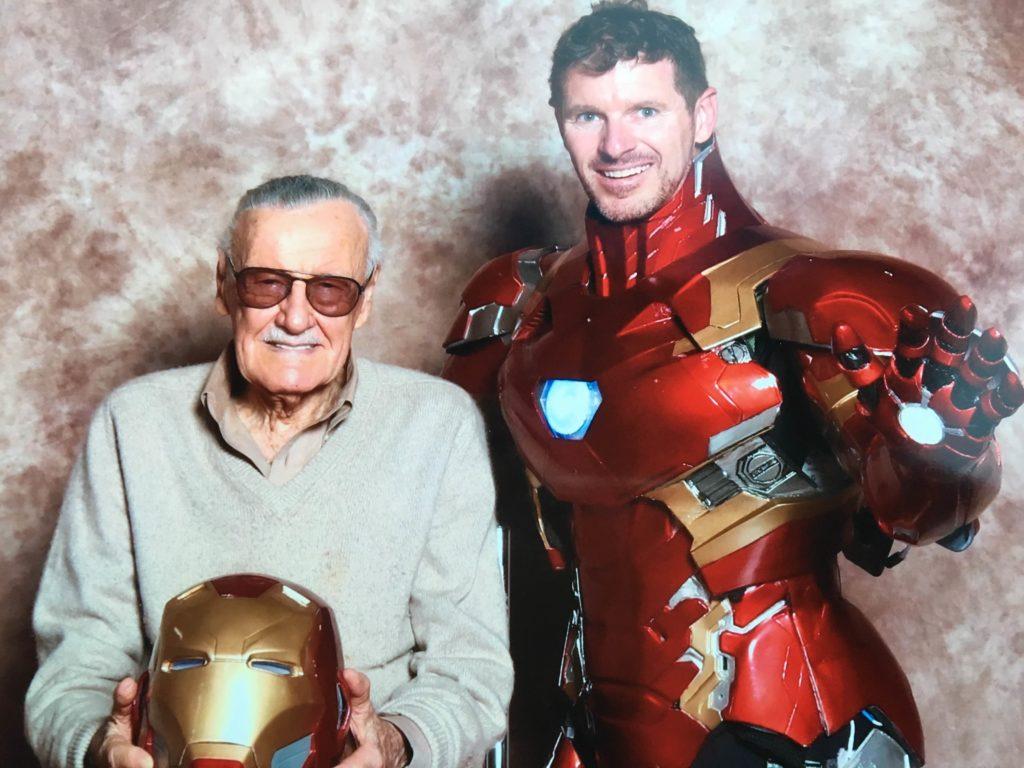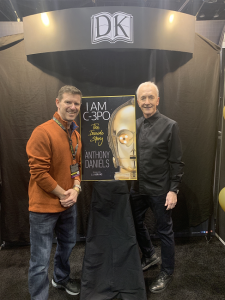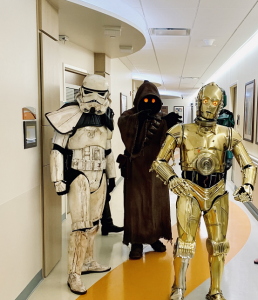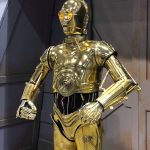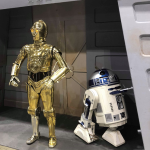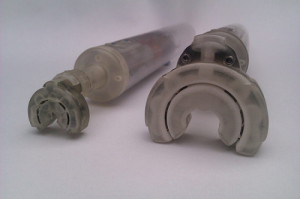A project that began as an ambitious therapeutic task for military veteran Tim O’Sullivan after he returned home wounded from combat has evolved into something so much greater. In 2016, O’Sullivan was looking for something to occupy his time after returning home from fighting overseas, and decided to try his hand at 3D printing. He purchased the files for a full-body Iron Man suit, and over the next eight months completed the 3D printed, wearable suit on his desktop Robo R1 +Plus. The end result was amazing, and O’Sullivan was hooked, telling 3DPrint.com at the time that the Iron Man suit would likely not be his last big project.
He took everything he’d learned from the 3D printed Iron Man suit, and by the summer of 2017, O’Sullivan had finished his next 3D printing project: a voice-activated War Machine Mark III suit from Marvel’s Captain America: Civil War. The life-size suit, 3D printed on his SeeMeCNC Rostock Max V3, featured some custom modifications to the files he purchased, and was made out of PETG, with fiberglass added to make the suit stronger. But this additional strength wasn’t for just any old reason – O’Sullivan was finally able to follow through on his original plan and wear the War Machine suit to visit sick children in the hospital.
Just like me, O’Sullivan happens to live in Ohio’s Miami Valley region, and I was lucky enough to meet him at the Dayton Mini Maker Faire not long after he completed the 3D printed War Machine suit, which I got to see in person. It was as cool as it looked in pictures, and to my great excitement, O’Sullivan told me that his next 3D printing project would be C-3PO from my beloved Star Wars series.
He reached out to us recently to say “mission accomplished,” and also to share some more exciting news – he and his 3D printed C-3PO suit made an appearance in Chicago for the Star Wars Celebration with George Lucas’s son Jet Lucas, and Anthony Daniels, the actor who portrays the golden droid in the movies.
“Was quite the reward after almost 10-12 months of hard work,” O’Sullivan told us.
“Alot of work went into the suit, much of the suit is a combination of 3D print, real brass accessories (Arm Pistons, eye grills and hand pistons etc.).”
O’Sullivan told 3DPrint.com that it was “an experience of a lifetime” when he was wearing the 3D printed suit at the Star Wars Celebration and got the chance to meet Daniels.
“It seemed to be well recieved based on his expressions,” O’Sullivan told us. “Unfortunately, I never got the chance to explain to him following the encounter on how the suit was made or how it had been a major part of my personal road to recovery.”
 Two years ago, the military veteran turned maker told us that working on his 3D printed character suits has been the “best therapy” for him when he was having a hard time sitting still. O’Sullivan also really enjoyed wearing the 3D printed War Machine suit to visit kids in the hospital, and earlier this week he made an appearance at the Dayton Children’s Hospital in his 3D printed C-3PO suit.
Two years ago, the military veteran turned maker told us that working on his 3D printed character suits has been the “best therapy” for him when he was having a hard time sitting still. O’Sullivan also really enjoyed wearing the 3D printed War Machine suit to visit kids in the hospital, and earlier this week he made an appearance at the Dayton Children’s Hospital in his 3D printed C-3PO suit.
“It was absolutely a touching experience for both the parents and children. We walked 2 floors of the hospital,” O’Sullivan told me in an email today. “The suit is the most difficult to wear and always leaves a few bruises, but well worth it.”
O’Sullivan’s detailed Star Wars droid suit is really something, incorporating a voice modulator and 25 watt amp that projects an emulation of the original C-3PO voice. In fact, it’s so realistic that it was accepted and certified by the Ohio Rebel Legion Apollo Base!
“For the upper torso, I had used a 3D scan of the original suit available on Thingiverse and then modified it using Zbrush to clean up imperfections,” O’Sullivan told 3DPrint.com. “I also used a high quality laser triangulation 3D scan of my body from a Human Solutions scanner to match my body frame. The legs were a challenge so I had commissioned Skylu Props who is actually a product engineer to design the 3D model of them to my body scan and have them function/articulate properly.”
O’Sullivan said that Kurt Heydenburg modeled the 3D printed arms of the suit, while Gordon Tarpley modeled the fingers.
“Almost all of the main body parts were 3D printed with the exception of the shorts and feet which were vaccum Formed plastic,” O’Sullivan told us.
To complete chroming on all of the suit’s 3D printed parts, O’Sullivan himself used a hydrochroming process (Angel Guilding Products), which is essentially “real silver sandwiched in between 2 layers of clearcoat on top of the 3D print,” with a layer of gold-tinted clearcoat to cover on the top.
While most of the 3D printing for C-3PO was completed on Rostock Max V2 and V3 printers, I learned that he has just upgraded to SeeMeCNC’s new Boss Delta system. I wonder what life-size 3D printed suit he’ll make with it…if he’s taking suggestions, I’m voting for Batman!
Discuss this story and other 3D printing topics at 3DPrintBoard.com or share your thoughts in the Facebook comments below.
[Images provided by Tim O’Sullivan]

